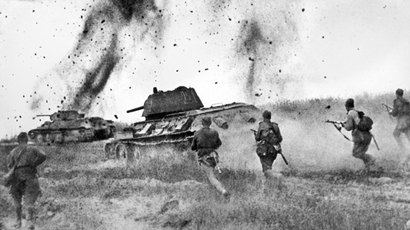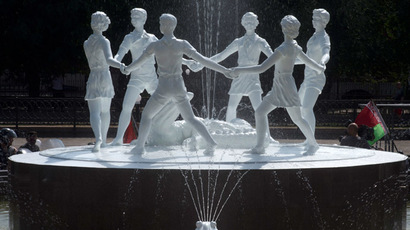Reclaiming Kerch: A hard-won WWII battle for Crimean Hero City (PHOTOS)
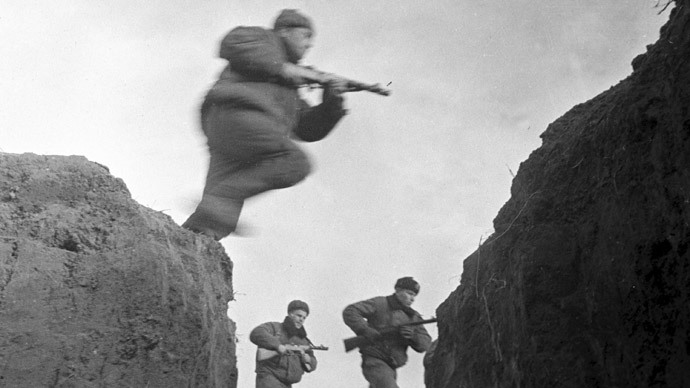
Hundreds of thousands killed, executed or sent to concentration camps – that was the price paid by the Soviet Union for the strategic Kerch peninsula’s liberation from Nazi Germany. Seventy years ago, fierce battles left the city of Kerch in utter ruins.
On April 10 Kerch starts celebrating 70 years of liberation from Nazis, remembers fight for Crimea.
Despite the fierce resistance of Soviet troops, Kerch fell to the Nazi onslaught in November 1941. Not just a launchpad for further offensive, for Hitler the Soviet Russian autonomous republic of Crimea was a prized goal, which he wanted to annex directly to Germany and name it Gotenland.

As part of the Nazis' "ethnic cleansing" of the region’s population, tens of thousands of civilians, initially Jews and Russians, but ultimately all the “non-Germans” were subject to removal or extermination. In one such instance in Kerch, around 7,000 people were shot dead by the Nazis and thrown into an anti-tank ditch.

The tragic incident, which became known as Bagerovsky Ditch massacre, was revealed in early 1942 after the Soviet troops temporarily regained the control of Kerch. Shocking scenes of relatives identifying their dead parents, spouses and children revealed the true face of Nazism at the time when the world knew little of Hitler's death camps.

Already in December 1941, the Soviet Army Command ordered to retake the Kerch peninsula. The Kerch-Feodosiya landing operation began on December 26, at the time when Nazi forces were preoccupied with the Siege of Sevastopol.

The first major battle for Kerch started with heavy losses for both sides, with casualties mounting in their thousands. One of the most iconic Soviet WWII photos – “The Death of a Soldier” – was taken by war photographer Anatoliy Garanin during the 1942 Kerch offensive.

Despite the initial success in the Kerch peninsula, Soviet troops failed to advance deeper into Crimea and the Germans counterattacked as early as mid-January. Tactical mistakes, a lack of coordination and proper supplies on the ground resulted in a crushing defeat for the Soviet Crimean front in May 1942.

More than 160,000 Soviet soldiers were captured or killed during the Wehrmacht’s Operation Trappenjagd, in which Kerch was again captured on May 18. About 140,000 more troops were evacuated over the Kerch strait and up to 15,000 were cut off but refused to surrender. Many of those, joined by the fleeing civilians, took to catacombs of theAdzhimushkay quarry to wage guerrilla attacks on the Nazis. Few survived.

The second major attempt to recapture Kerch and the Crimea followed in November 1943 with the Kerch–Eltigen landing operation by Soviet troops.

The Soviet Black Sea Fleet and Air Force suffered heavy losses due to fierce resistance from the fortified Nazi line of defense, frequent Luftwaffe raids and underwater mines dotting the strait.

Memories of the brutal 1943 clashes near Kerch survive with Ekaterina Mikhailova-Demina who, serving as a marine scout and medic at the age of 17, saved dozens of lives during the landing. Like the character Katyusha in the famous Soviet song of the same name, she became famous as the only woman servingin front-line reconnaissance of the Soviet marines.
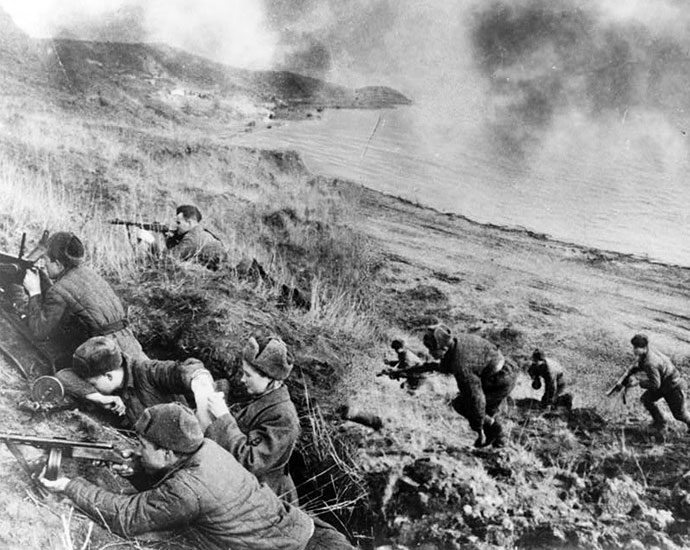
Although the 1943 Soviet attack failed to immediately gain ground on the Kerch peninsula, the Red Army successfully held onto the westernmost beachhead of Yenikale. By reinforcing the area and bringing in additional troops by sea, Soviet troops prepared a vital springboard for the 1944 Crimean offensive.

By the end of 1943, more than 75,000 Soviet troops were sent to the tiny beachhead. To hold their positions, they sometimes had to fight off 10 to 20 attacks by German forces a day.
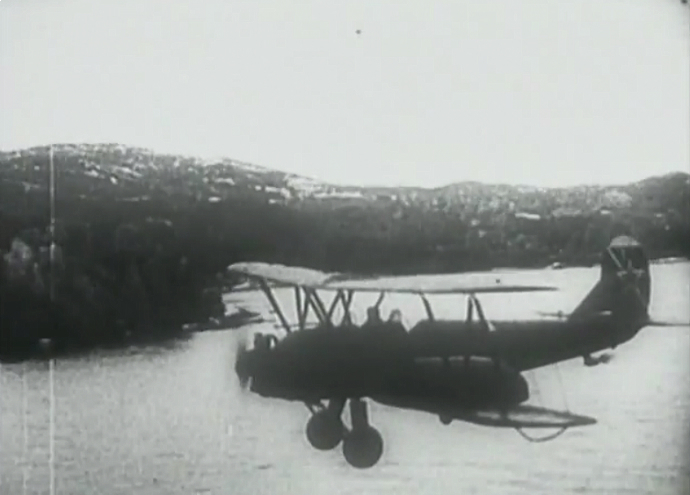
A total of 470,000 soldiers were massed by the Soviet Union to retake Crimea by the time the offensive started on April 8, 1944. The Soviet troops also established superiority in firepower against the 200,000 German troops, having one and a half times as many artillery weapons and twice as many tanks.
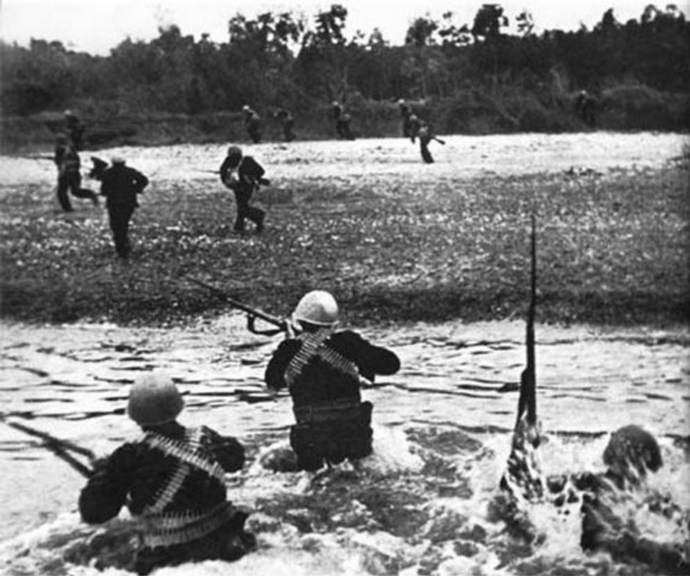
Several Soviet armies simultaneously advanced from the 4th Ukrainian Front and from the Kerch peninsula backed by two fleets, a tank corps and a squadron of warplanes. Despite Hitler’s order to Nazi troops to stand to the last, Soviet troops swept away the German and Romanian defenses. Moscow claimed that up to 140,000 enemy troops were captured or killed.
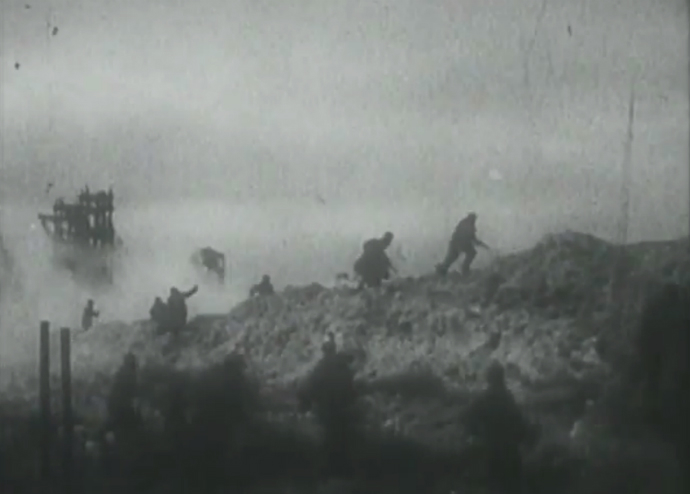
The city of Kerch was liberated from the Nazis on April 11. In the subsequent month of bloody battles for Crimea, the Axis forces were dealt a major blow, which shattered Hitler’s influence in the Balkans.

The victory did not come easy, though, with more than 17,700 Soviet troops killed and over 67,000 wounded in the offensive. Kerch was devastated several times over, with over 85 percent of the city destroyed by April 1944. Soviet writer and war correspondent Pyotr Pavlenko said he was not as moved by the ruins of Stalingrad as many others “because I had seen Kerch destroyed.”

Kerch later received the honorable title of Hero City, placing it in line with the Hero City of Sevastopol. The heroic Siege of Sevastopol lasted for 250 days until the last line of the city’s defenses was breached in July 1942. The overall Soviet casualties amounted to more than 200,000, with more than 18,000 recorded deaths and tens of thousands of people taken prisoner and sent to concentration camps. Sevastopol was liberated on May 9 following a month of bitter fighting.

For many Kerch and Sevastopol residents, the memories of Nazi atrocities remain as vivid today as they were for their parents and grandparents who experienced WWII. For the Soviet Union, it took decades to explore and unveil the tragic Adzhimushkay quarry defense, but other mass graves of Soviet soldiers and civilians are still found in and around Kerch to this day.














